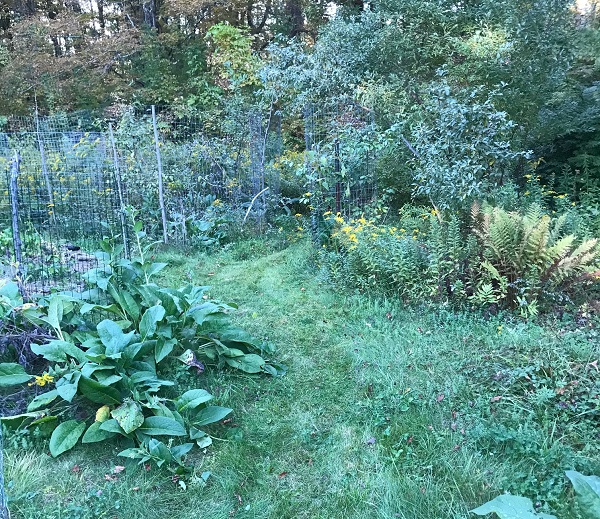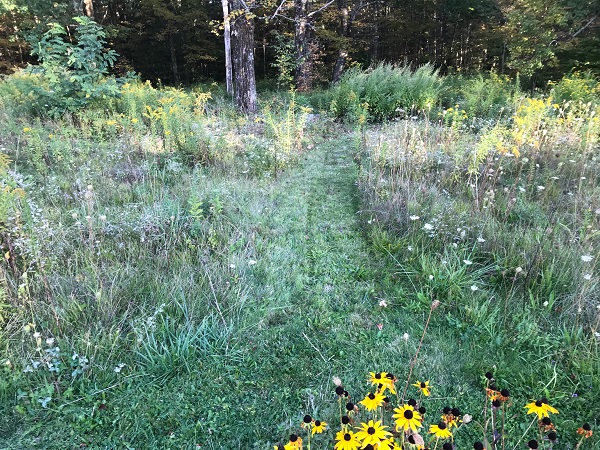| The Sandisfield Times |
|---|
| Meadows for Pollinators
A Different Way to Tend Your Fields |
|
by Bill Taylor Published November 1, 2025 |
|
 Photo: Bill Taylor. Are you interested in saving money and effort, enjoying wildflowers while supporting natural systems that manage pests and diseases in the yard? If so, you may want to consider changing your lawn care if you are not already doing so. What we do is to mow areas where we want to recreate or need visibility and create paths through the remainder of our cleared areas and allow the rest to grow perennial plants in abundance. Walking the paths, we see butterflies, bees, frogs and toads (which eat ticks by the way), and different wildflowers throughout the season. Our one concern with not mowing the entire meadow is the tendency for shrubs and trees to get started, so annual mowing is what we currently do. The timing of mowing depends on what is blooming and the nesting habits of birds. We usually mow after hard freezes, in November or even December. By mowing at that time, the resulting mulch is a mix of leaves and dry plant matter, and if there are a lot of weed seeds we may use this mulch near trees rather than in garden beds. Often we do a second mowing in very early spring as soon as the meadow is no longer soggy from snowmelt, a time when more of the seeds have fallen below what the mower will pick up so this mulch can be used more widely.
 Photo: Bill Taylor. Having a mower with collection basket or catcher on the back allows the mulch to be used elsewhere, although there is something to be said to use the mower to blow it onto the meadow/lawn to feed it. We also use a mulch with mostly chopped-up leaves or a mix of leaves and grass onto garlic beds which benefit from a deep layer to protect the slowly emerging garlic from the coldest winter weather (it is rarer and rarer to have a deep snow cover to insulate it). But please note that ground-nesting bees and other pollinators use the leaves for protection, so at least leave some of them undisturbed. Most of them will decrease greatly by spring or decompose almost entirely so you have much less work to do. Leaving them under the tree that dropped them will also better feed that tree as they decompose and the fungi and microbes evolved with that species' leaves will have something to eat so it is shared with the tree roots.
 Photo: Bill Taylor. If anyone complains about your "neglected" yard, you can put up a "pollinator meadow" sign to demonstrate your intentions! As for pruning dead canes of raspberries and other perennials, I was told in northern California by a bee enthusiast that often the canes are inhabited in the winter by native bees and other pollinators. I am not sure that is true in our colder climate and we have not seen evidence but are not sure. Pruning in early April is an option. But if you want to fall prune these, check for evidence of nesting (some species will "cap" the nest with mud or organic matter) and keep those branches or canes with nests in the area. I usually fall prune the dead canes and cut them into large pieces and mulch the berry patch with them because I do not trust my ability to see any pollinator nests.
 Photo: Bill Taylor. Having more of those pollinators will ensure an abundance of bloom and seeds/fruits for people and other species next season. Some of the ideas for this article came from an interview Tom Christopher did with Joanne Hall and Bram Gunther of Plan It Wild, along with other things we have learned over several years. |
©The Sandisfield Times. All rights reserved.
Published November 1, 2025